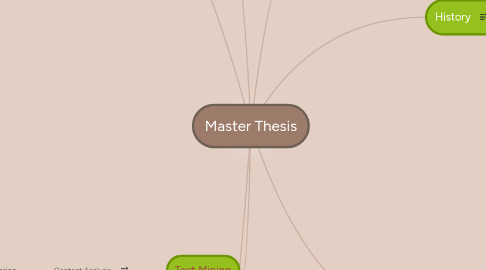
1. Web scraping
2. Social Media
2.1. Necessity
2.2. Information Retrival
2.3. Social Network Services
2.3.1. Facebook
2.3.1.1. Graph API
2.3.1.2. Insight
2.3.2. Twitter
2.3.2.1. Retrieve Historical data
2.3.2.2. Building search Query
2.3.2.3. Data Description
2.3.2.4. Characteristics of Tweets
2.3.2.5. Twitter API
3. Text Mining
3.1. Content Analysis
3.1.1. Natural Language Processing
3.1.1.1. Sentiment Analysis
3.1.1.1.1. APIs
3.1.1.1.2. Machine Learning Methods
3.1.1.2. Stem
3.1.1.3. Tokonize
3.1.1.4. Parse
3.1.1.5. Spelling
3.1.1.6. Abbriviation
4. Validation
4.1. Worlds Most Innovative Companies
4.1.1. Forbs
4.1.2. Bloomberg
4.2. Target Companies
4.2.1. Apple
4.2.1.1. Data filtering
4.2.1.2. Google news
4.2.2. Google
4.2.3. Microsoft
4.2.4. VMware
4.2.5. Salesforce
4.2.6. Nintendo
5. History
6. Innovation
6.1. Types
6.2. Activities
6.3. Attributes
6.4. Metrics
7. Innovation Measurment
7.1. Indicators
7.1.1. R&D
7.1.1.1. Pros
7.1.1.2. Cons
7.1.2. Patent
7.2. Innovation process models and measurment framework
7.2.1. Diamond model
7.2.2. Innovation funnel
7.2.3. Innovation Value Chain (IVC)
7.2.4. Oslo manual
7.2.5. Chain-linked model of innovation
7.3. Business model innovation frameworks
7.3.1. InnoCERT
7.3.2. Inno-Biz assessment
7.3.3. NESTA
7.3.4. Imrove-Europe Innvoa
7.3.5. Innovation radar
7.3.6. Innovation for growth
7.4. Innovation measurment related studies (Finland, Norway)
7.4.1. Nordic innovation report
7.4.2. Industrial innovation in Finland

